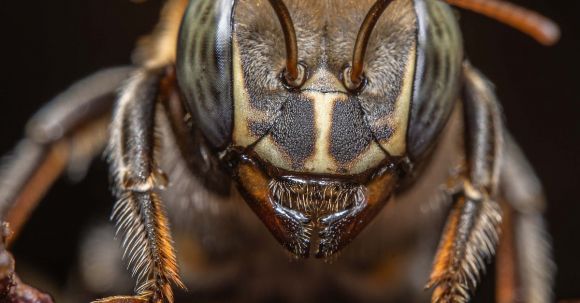Insects, with their diverse shapes, sizes, and behaviors, have always been a source of fascination for humans. From the smallest ants to the largest beetles, these tiny creatures play crucial roles in our ecosystems. In this article, we will delve into the curious world of insects and explore some of their most intriguing characteristics.
Incredible Adaptations
One of the most remarkable aspects of insects is their ability to adapt to various environments. Take the water strider, for example. With its long, slender legs and hydrophobic body, this insect can effortlessly skim across the surface of ponds and lakes. Similarly, the stick insect, with its uncanny resemblance to a twig, blends seamlessly into its surroundings, making it almost impossible to spot.
Insects also display incredible strength and agility. The rhinoceros beetle, known for its large horns, can lift objects up to 850 times its body weight. This remarkable feat is made possible by the beetle’s powerful muscles and exoskeleton, which provides structural support.
Social Structures
Many insects exhibit complex social structures that rival those of humans. Ants, for instance, live in highly organized colonies with designated roles for each member. The queen, responsible for reproduction, is the heart of the colony, while worker ants perform various tasks such as foraging, nursing the larvae, and defending the nest.
Bees also have a sophisticated social structure. Within a beehive, there is a strict division of labor, with worker bees collecting nectar, building the hive, and caring for the queen. The queen bee, on the other hand, is solely responsible for laying eggs and ensuring the survival of the colony.
Insect Communication
While insects may lack the ability to speak, they have evolved unique ways to communicate with each other. Bees, for instance, perform intricate dances to convey information about the location of food sources to their fellow hive members. By carefully choreographing their movements, bees are able to communicate the distance, direction, and quality of food with remarkable precision.
Some insects, such as the firefly, use bioluminescence as a means of communication. Through the emission of light signals, fireflies can attract mates or warn predators of their toxicity. This mesmerizing display of light is a testament to the incredible diversity and adaptability of insects.
Ecological Importance
Insects play a vital role in maintaining the balance of ecosystems. As pollinators, they facilitate the reproduction of plants by transferring pollen from one flower to another. Without insects, many plant species would struggle to reproduce, leading to a decline in biodiversity.
In addition to pollination, insects also serve as a crucial link in the food chain. They are a primary food source for many birds, reptiles, and mammals. In turn, these predators help control insect populations, preventing them from becoming overly abundant.
The Future of Insects
As we continue to explore the curious world of insects, it is essential to recognize the threats they face. Habitat loss, climate change, and pesticide use pose significant challenges to insect populations worldwide. To ensure the survival of these remarkable creatures, it is crucial that we take steps to protect their habitats and promote sustainable practices.
In conclusion, the world of insects is a fascinating and complex one. From their incredible adaptations to their intricate social structures, these tiny creatures never cease to amaze us. By appreciating and understanding their importance, we can work towards preserving the delicate balance of our ecosystems and ensuring a future where insects thrive.
